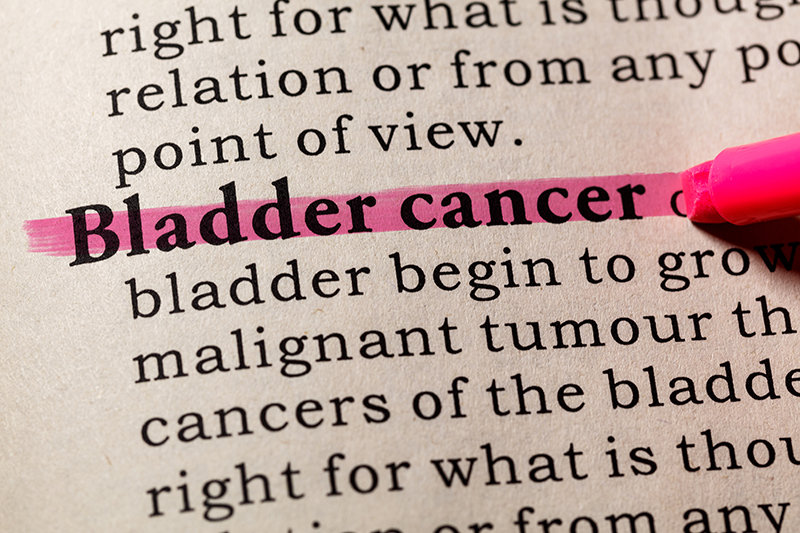Surgery is an important treatment modality for most bladder cancers. The type of surgery depends on the extent or the stage of the cancer, and other factors like the age of the patient, preference and long-term side-effects that surgery can cause.
Transurethral resection of bladder tumor (TURBT)
A transurethral resection of bladder tumor (TURBT) or a transurethral resection (TUR) helps detect bladder cancer. It also provides information on whether the cancer has metastasized into the muscle layer of the bladder wall. TURBT is a common treatment for early-stage non-muscle invasive bladder cancers. In some cases, a second, more extensive TURBT makes sure there is no relapse.
TURBT involves insertion of a tube in through the patient’s urethra so there is cutting open the abdomen. General anesthesia by drugs or by local anesthesia where the lower portion of the body goes numb. Then inserting of thin, rigid cystoscope (a resectoscope) into the patient’s bladder helps access tumor cells. The resectoscope has a wire loop at one end. This is used to remove any abnormal tissues or tumors. This tissue goes for testing in the lab through a biopsy.
After removal of the tumor via surgery, fulguration ensures that no tumor cells are remain. This method basically involves high-laser treatment of of any remaining cells through the resectoscope.
Cystectomy
When bladder cancer is invasive, oncologists advise a cystectomy. In most cases, chemotherapy goes before cystectomy. General anesthesia preceded for both types of cystectomy, partial or complete.
Partial cystectomy
If cancer is still small but is invasive (into the muscle layer of the bladder wall), surgery removes it along with part of the bladder wall. The punctures in the bladder wall are then stitched up. Then, there is a removal of nearby lymph nodes for testing of cancer metastasis. An advantage that partial cystectomy has over other surgeries are that bladder conservation is possible and there is no requirement of reconstructive surgery. Disadvantages of this surgery are that the bladder may be incapable functioning at normalcy or that the cancer may relapse.
Radical cystectomy
If the cancer is not large or is prevalent in a greater part of the bladder, a radical cystectomy is the first option. This operation involves removing the entire bladder and nearby lymph nodes. In men, there is removal of the prostate and seminal vesicles. In women, the ovaries, fallopian tubes, the uterus , cervix, and a small part of the vagina are removed.
Most of the time, a surgeon carries out a cystectomy with an incision in the abdomen. A week at the hospital and a few more weeks of rest at home should suffice before the patient gets back to normal activities.
In a laparoscopic, or ‘keyhole’ surgery, the surgeon may operate through many smaller incisions using special long, thin instruments, one of which has a tiny video camera on one end to see inside the patient’s body. The surgeon may either hold the instruments directly or may sit at a control panel in the operating room and use robotic arms to do the surgery (a robotic cystectomy). This type of surgery may result in less pain and quicker recovery because of the smaller cuts. Research is still underway for improvisations and to make it more efficient.
It is important that a surgeon with experience in treating bladder cancer conduct the cystectomy. If the surgery does not go well, the cancer is likely to come back.
Reconstructive surgery after radical cystectomy
If removal of the bladder is a must, an alternative is made to store urine which is voided intermittently. The following are a few options:
1. Incontinent diversion
One of the options is to remove and clean a short piece of the intestine and then connect it to the ureters the tubes that carry urine out of the kidneys. The creation of an ileal conduit allows for urine to pass from the kidneys to the outside of the body. The urine then flows directly from the kidneys through the ureters into the ileal conduit. One end of the conduit connects the skin on the front of the abdomen by an opening called a stoma (a urostomy).
After this procedure, a small bag sticks to the skin of the patient’s belly around the stoma to collect the urine. Urine slowly drains out non-stop which means the uro-bag must be on all the time. It empties whenever it is full. This procedure is known known as incontinent diversion, because the patient cannot control the flow of urine out of the body.
2. Continent diversion
Another option for urine to drain is a continent diversion. Here, a pouch made from a piece of intestine is attached to the ureters. One end of the pouch is connects to an opening or the stoma in your skin on the front of your belly. Surgery creates a one-way valve at this opening. This allows the storage of urine in the pouch. The patient then empties it several times a day by inserting a catheter into the stoma through the valve. This method is preferable because of the absence of the uro-bag.
3. Neobladder
This method routes the urine back into the urethra where there is no hindrance to passing urine regularly. This surgery creates a new bladder or a neobladder from a piece of intestine. The ureters are sewn to the neobladder letting the patient urinate normally on a schedule. There is no urge to urinate which demand for a schedule. Over time, most patients regain the ability to urinate normally during the day, but incontinence may persist at night.
If cancer has spread, surgery cannot remove it. A diversion may be made without taking out the bladder. In this case, the purpose of the surgery is to prevent or relieve blockage of urine flow, rather than try to cure the cancer.
Furthermore, read about complications after bladder cancer surgery




